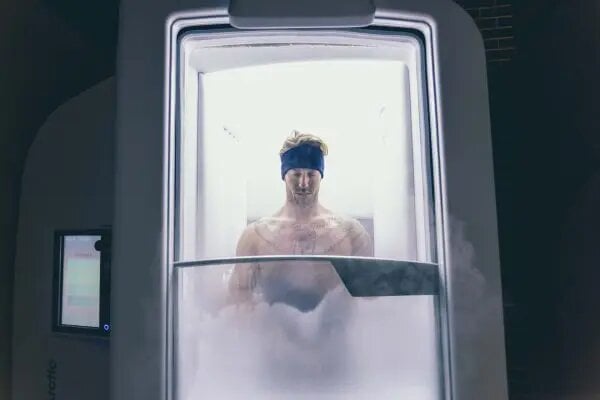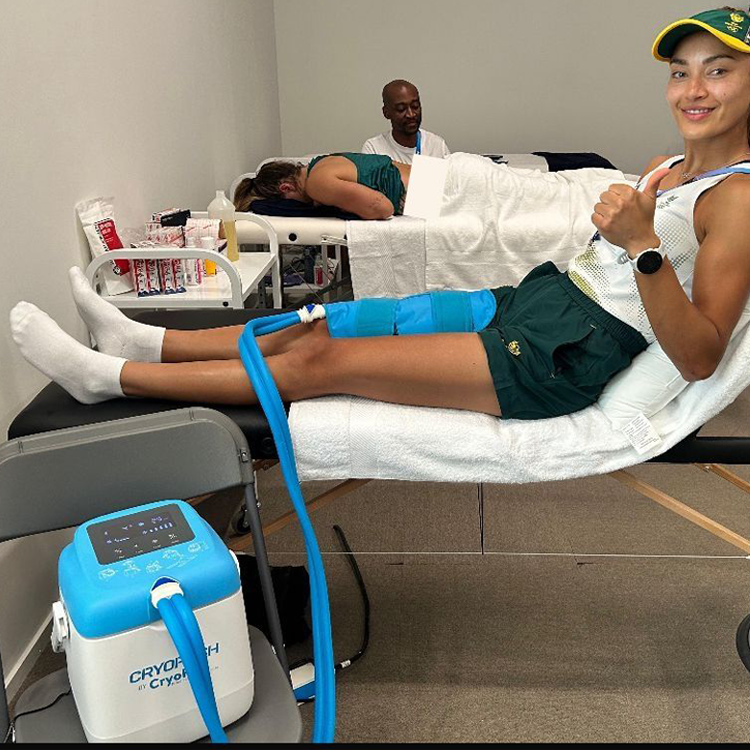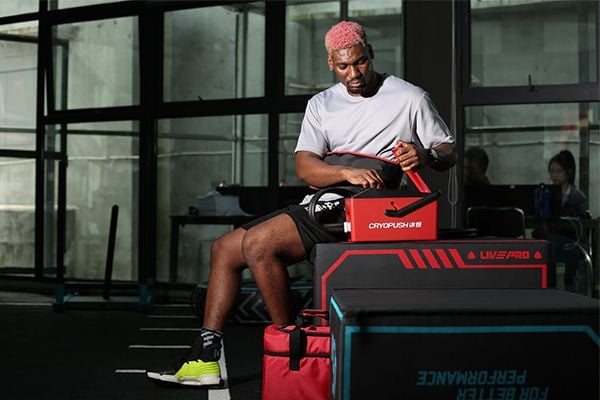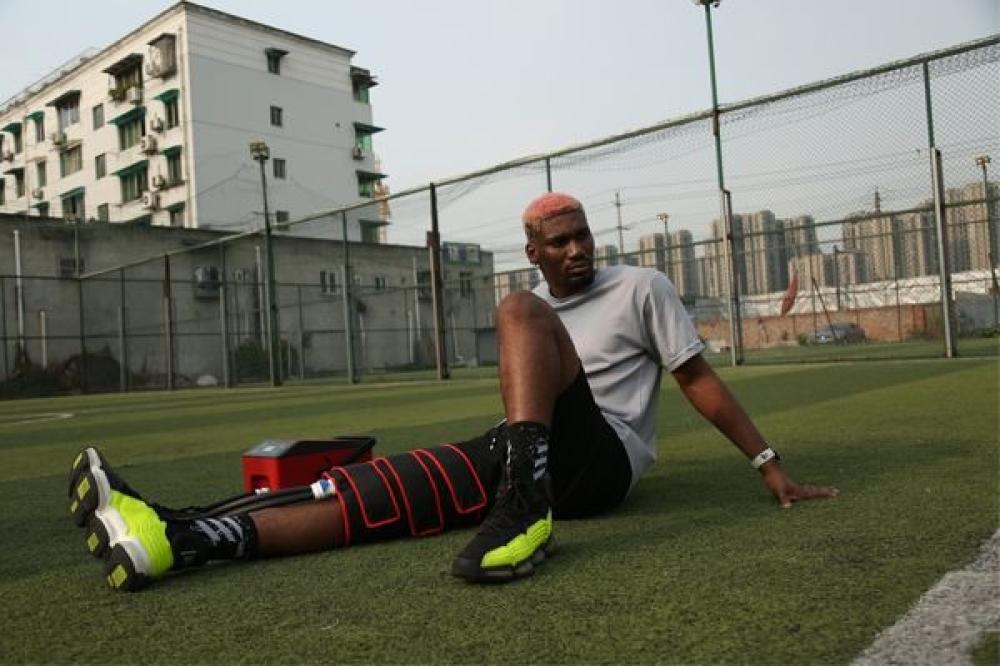Top 7 Cryotherapy Benefits for Athletes
Athletes are constantly engaged in intense physical activities during training, practices, and competitions. As a result, injuries—ranging from minor sprains to more severe strains—are an inevitable risk. According to the U.S. Department of Health and Human Services, an estimated 8.6 million sports injuries occur annually in the United States.1 Whether you’re practicing for a game or pushing your limits in training, injury prevention and recovery are crucial to maintain peak performance. Cryotherapy, the use of cold therapy to treat injuries, offers a proven solution for athletes looking to recover faster, reduce muscle strain, and prevent further injury.

7 Benefits of Cryotherapy for Athletes
Cryotherapy offers a wide array of benefits, helping athletes speed up recovery, reduce soreness, and increase overall performance. Below are the top benefits of incorporating cryotherapy into an athlete’s routine:
1. Reduced Inflammation
Inflammation is the body’s natural response to injury or infection, involving the movement of white blood cells to areas where there might be harm. While inflammation is protective, excessive fluid buildup can lead to swelling, pain, and prolonged recovery. Cryotherapy helps reduce inflammation by constricting blood vessels, which in turn reduces swelling and speeds up the healing process. Once the cold therapy session ends, blood flow returns to the area, bringing oxygen and nutrients to accelerate recovery.2
2. Accelerated Post-Exercise Recovery
After intense exercise, muscles experience microtears and fatigue, which need time to repair. Cryotherapy, particularly when combined with cold compression therapy, has been shown to reduce recovery time by promoting faster muscle healing. This enables athletes to return to training and competition sooner, with less muscle soreness and a reduced risk of injury.3 Cryotherapy also helps alleviate delayed onset muscle soreness (DOMS), providing a more efficient recovery process.
3. Improved Flexibility and Mobility
After a rigorous workout, muscles can become tight, making it difficult to maintain flexibility and range of motion. Cryotherapy helps relax tight muscles, promoting greater flexibility. Cold compression therapy, in particular, targets problem areas to quickly loosen muscles, making it easier to stretch and move.4 This is especially beneficial for athletes who need to maintain high levels of flexibility for performance in sports like gymnastics, swimming, or martial arts.

4. Enhanced Muscle and Tissue Repair
Cryotherapy accelerates the healing of muscle and connective tissue damage by improving blood circulation and lymphatic fluid movement. The cold helps reduce swelling and inflammation, creating a favorable environment for tissue repair. Additionally, cold therapy has been shown to stimulate the production of collagen, a protein essential for tissue healing.5 This rapid response is crucial for athletes recovering from tears, sprains, or strains, allowing them to return to activity more quickly.
5. Reduced Recovery Time and Injury Prevention
Regular use of cryotherapy reduces the chances of developing chronic injuries by keeping muscles and joints in optimal condition. The cold therapy prevents overuse injuries, like tendinitis or stress fractures, by reducing muscle fatigue and soreness. Furthermore, cryotherapy reduces the likelihood of reinjuring previously affected areas by promoting faster healing of prior injuries. With consistent use, athletes can extend their careers by preventing long-term damage to muscles and joints.6
6. Pain Relief and Nerve Compression Management
One of the most immediate benefits of cryotherapy is its ability to numb pain. The cold therapy decreases nerve activity, providing temporary pain relief from muscle strains, sprains, and joint pain. This can be particularly helpful for athletes who are dealing with pain during recovery periods. Cryotherapy can also aid in managing post-surgery discomfort, reducing the reliance on pain medications. By effectively reducing pain, athletes are more likely to stick with their rehabilitation and recovery programs.
7. Improved Mental Focus and Reduced Fatigue
Cryotherapy can also have a positive impact on an athlete’s mental state. The release of endorphins, triggered by the cold exposure, not only helps with pain management but also boosts mood and reduces mental fatigue. This makes it easier for athletes to stay focused, energized, and mentally sharp for their training or competitions. Regular cryotherapy can also reduce overall feelings of fatigue, enabling athletes to perform at their best without being bogged down by the mental drain of heavy training sessions.

Conclusion
Cryotherapy has become an invaluable tool for athletes, offering a wide range of benefits that contribute to faster recovery, reduced injury risk, and enhanced performance. Whether it’s reducing inflammation, improving flexibility, or accelerating muscle repair, cold therapy plays a vital role in helping athletes recover more efficiently and maintain peak performance.
For athletes interested in incorporating cryotherapy into their recovery routine, consulting with a healthcare provider is essential to ensure the right approach for their specific needs. Cryopush offers effective cryotherapy solutions for athletes, utilizing cold compression therapy to maximize recovery time and prevent injuries, so athletes can get back to their game faster

